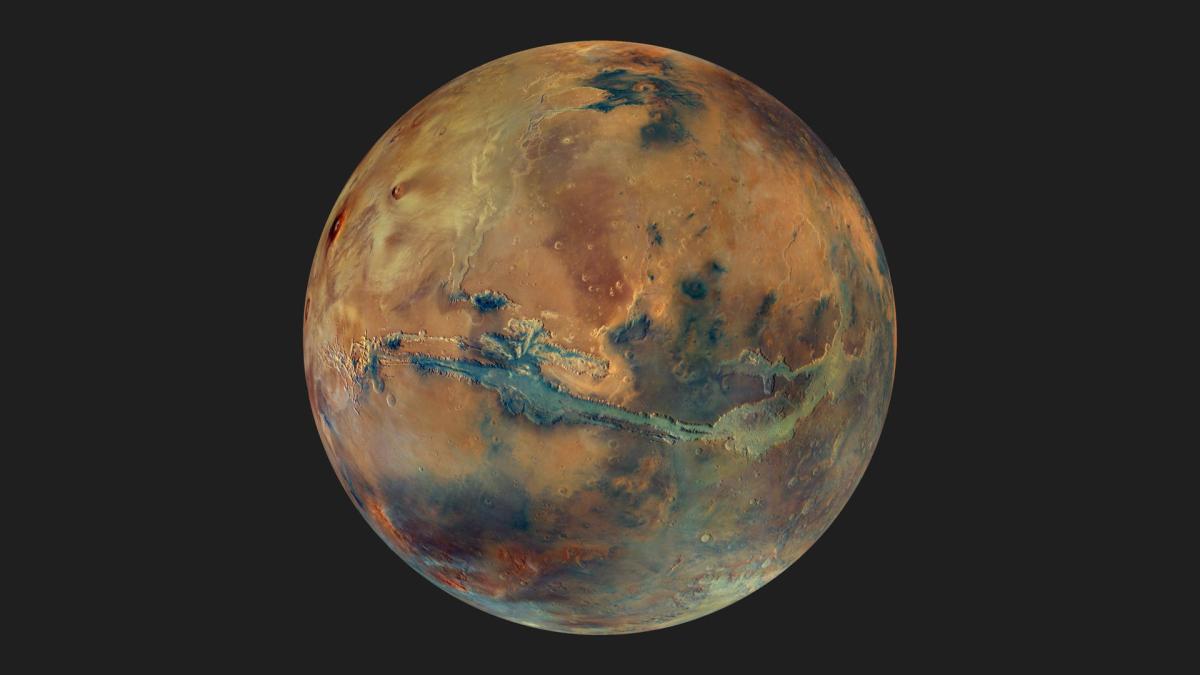A new image to reflect on Mars, with “never seen before” and unprecedented colors, marks the 20th anniversary of the European Space Agency’s (ESA) Mars Express mission orbiting the red planet. A test of resistance, the predicted two years have already been two decades.
ESA also plans to offer an hour of images of the planet on its YouTube channel today. One every 50 seconds, a live broadcast from the visual tracking camera on Mars’ orbit.
The new photo, released today, is a mosaic of images that reveal the planet’s color and composition in “spectacular detail,” created using data from the HRSC camera.
“In addition to its beauty, the mosaic provides fascinating information about Mars’ composition, diversity and Unprecedented color detail on its surface”, highlights the ESA.
Mars is famous for its red color, which is caused by high levels of oxidized iron, but the new image shows large areas of the planet dark and blue due to gray-black basaltic sands of volcanic origin. It forms extensive layers of dark sand.
Water-weathering material is lighter and the two most common are clay and sulfate minerals, which appear particularly bright in such color combinations.
The presence of these minerals indicates that liquid water has existed on Mars for a long time, eroding the rocks over time and creating significant clay deposits.
Sulfate minerals are visible, although a thin layer of dark sand is covered, but “Their impressive color variations can be appreciated on closer inspection”, Explains the ESA.
HRSC normally photographs the surface of Mars from about 300 kilometers, resulting in images covering areas about 50 kilometers in diameter, but this time a slightly different approach was used to get a wider view.
That camera is one of the instruments on the Mars Express. 20 years ago today, it was launched to MarsRule as on 25th December 2003.
The probe orbits Mars for one year (687 Earth days) to study its geography, climate and atmosphere, providing valuable data on its history and potential to support life.
Its name, Mars Express, is not accidental, as it was built in record time and at a much lower cost than previous similar missions. But two decades later “it exceeded all expectations.”ESA agrees to expect it to remain in service until at least the end of 2026.
Over two decades it has traveled 1.1 billion kilometers in more than 24,000 orbits around Mars, during which it “captured stunning images of the Martian surface and weather changes, revealing a variety of landscapes, from mighty volcanoes to deep valleys and ancient river basins”.
The probe’s various instruments played a “pivotal role” in detecting water ice hidden above and below the planet’s surface and revealing water ice in the polar caps. Discoveries with far-reaching implications.
The orbiter has had problems over the years that have been resolved by experts, from mishaps related to the wiring of solar panels to mass memory problems that caused it to lose its long-term memory storage capacity.





